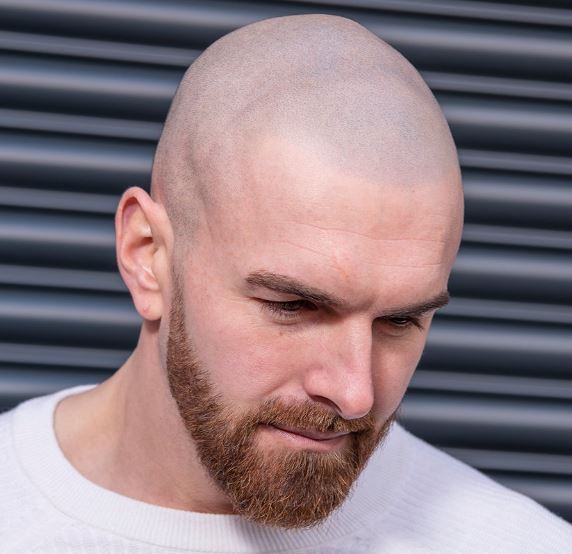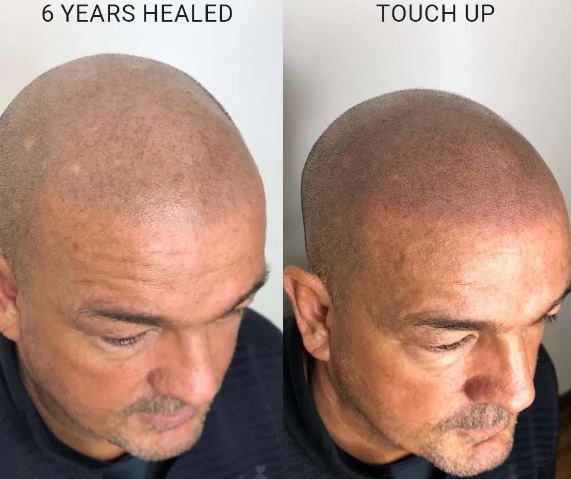How Long Does Scalp Micropigmentation Last?
Clients who are considering scalp micropigmentation often want to know how long the look will last. The treatment is usually done in two to three sessions and then a retouch is recommended every four to six years to maintain the desired aesthetic.
The treatment can last up to five years or more. The longevity of the treatment is dependent upon many factors including the quality of the pig-mentation solution, the skill of the artist, the type of ink used and how well the scalp heals after the procedure.
It is important to note that the ink color does not fade with time, it only fades. This is one of the reasons why the artist is so important to the longevity of the results. If the pigment is not applied correctly, the results may not last as long as they should.
The Longevity of Scalp Micropigmentation Results
Micropigmentation is gaining popularity as a way to conceal hair loss and balding in men and women. It is a fast procedure with permanent results and only minimal touching up required. This process does not stop hair loss or cause the growth of new hair follicles, but it is more like a scalp tattoo with the help of highly skilled SMP artists.
Scalp tattooing is a technique which creates natural-looking hair follicles that match your skin tone to make your hairline look more complete and disguise any signs of baldness. The results of this treatment can last several years, although this is subject to various factors. Ideally, the treatment needs to be retouched every 4-6 years if you want to maintain a fresh low-cut appearance.
How Long Results Last Before A Retouch
Your last micropigmentation session will give you four years of results, leaving you with a permanent hairline. Performing a retouch every few years is an excellent way to keep your hairstyle looking neater, fuller and more natural. Some habits and environment exposures can shorten the longevity of the results, so a retouch may be necessary sooner.
They include:
1. Sun Exposure
To best protect your scalp from the sun and ultraviolet rays during the healing process, it is recommended to wear a hat and stay out of the sun. Additionally, your artist will provide various instructions to help you heal and allow your treatment to perform at its best, such as avoiding washing your head immediately after the procedure as well as other processes to speed up the healing.
In order to preserve the quality of your SMP, it is important to keep your head out of direct sunlight. To this end, you should be wearing a hat in addition to limiting the hours spent in the sun. Additionally, your artist will provide you with instructions to ensure that your treatment heals properly, such as waiting to wash your head for a few hours after the procedure and other methods to accelerate the healing process.
2. Pigment Type/Quality
When planning a cosmetic procedure, the type and quality of pigment used are essential things to consider. Some pigments need to be retouched sooner when they are exposed to sunlight and the elements, while traditional tattooing inks and scalp micropigmentation should not be exposed to UV radiation for extended periods. On the other hand, other pigments are more resistant to fading and last for a longer time.
If you want to ensure the best results, you should pick an artist who sources their micropigmentation pigments from a good supplier. By picking practitioners who use only premium quality pigments, you can get the best longevity out of the pigment.
By working with a well-known artist, you can be certain that you are using skin-safe, high-grade pigment which corresponds with your skin tone. The results will also persist for a longer period of time before requiring another touch-up. At HairDot.ink, we utilize Folicule pigment which is designed for scalp micropigmentation specifically.
3. Quality of the Procedure
If you’re considering scalp micropigmentation, it typically requires 2-4 sessions 10 to 14 days apart to achieve the look you want. You can maintain this neat look for up to six years or change the appearance as you choose. Make sure to find a qualified and experienced practitioner to handle the procedure.
The process of scalp micropigmentation is delicate and intricate; it is thus vitally important to find a qualified practitioner who knows the ins and outs of the art of concealing baldness/receding hairlines. Such a practitioner must have the experience and expertise to ensure the desired outcome.
4. Hair Loss Speed
Hair loss is a gradual process that can take years, and SMP is an ideal solution for receding hairlines. After SMP, you can expect to have a neat, natural appearance of full short hair. It is important to keep in mind that SMP does not cause hair growth or prevent further hair loss.
The amount of time between SMP treatments will depend on the individual’s rate of hair loss, but retouches should generally be done every few years when the hairline begins to recede more noticeably.
Scalp Micropigmentation is designed to cover up any balding sections of your scalp, but you may end up with more of them before you’re due for your recommended retouch. This retouch ensures that your scalp looks seamless and takes care of any new balding you may have.
Clients can experience different levels of hair loss, so it’s important to get a retouch when you need it. When visiting your artist, make sure to discuss any potential further balding or thinning and what steps you and them can take to prevent it.
Top Tips for Maintaining SMP Results Appearance
Since the pigments used in micropigmentation are not native to the body’s macrophage cells they are deposited into, over time the body will gradually wear away the dye and require a retouch. Despite this, your results will never truly disappear, but they will need to be maintained to keep their crisp, lush, and near-natural appearance. Here are five tips that clients can use to try and obtain longer-lasting effects:
1. Proper Aftercare
After the procedure is done, you will have to take some measures of precaution in order to ensure that your scalp is taken care of. This includes not scrubbing it or using shampoo for the following 4-5 days. Additionally, you must keep your scalp safe from any contact with alcohol, bleach, or other harsh agents. To finish, you should use a mild, non-greasy moisturizer daily to help protect it.
2. Research all Products
When it comes to micropigmentation aftercare, you will find a variety of products available, including soaps, moisturizers, creams, and sunscreens. It is important to carefully review each product and consult with your artist if you can. The best scalp care products for healing should be gentle, non-abrasive, and from trusted brands.
3. Choose Professional SMP
When it comes to Micropigmentation, it is highly recommended that you hire and work with an expert in the trade if you want to get longer-lasting outcomes. This popular trend can be used by both men and women, and is suitable for individuals with shorter hair, as it adds darker pigments that help to make thin hair appear thicker and fuller. In order to ensure the best results, it is essential that you consult and hire a qualified and licensed SMP artist.
Following the general guideline of retouching every 4-6 years is usually the best option. However, that may change depending on your individual needs. When in doubt, consult with your SMP artist to determine the best time for another retouching procedure.
SCALP MICROPIGMENTATION AND FADING
One of the most common questions we receive has to do with how scalp micropigmentation fades after the procedure, so we’d like to take this time to explain what you can usually expect. There are two distinct stages of fading that can occur – short-term fading between treatment sessions, and long-term fading over time.
Does scalp micropigmentation fade completely?
In order to obtain the best results from the treatment, multiple sessions will likely be needed; usually 2 to 4, depending on the client’s personal condition. Additionally, it is crucial to ensure that a minimum of 7 days are allowed to pass between each session, as this is the necessary time that the skin needs to heal and for the pigmentation to be effectively integrated into the scalp.
It is common to experience fading between each session, which is why it might appear that the pigment is fading. What is actually happening is that each micro-wound develops a scab, and this scab is larger and darker than the actual pigment deposit.
Many clients don’t understand the healing process, and aren’t prepared for the pigment to lighten and the scabs to fall away. When this occurs and they see that their treatment is lighter than before, they often feel disappointed and ask us to correct it with a darker pigment.
Any experienced scalp micropigmentation technician is aware of the lightening effect that occurs during the process, and utilizes it to their advantage. By using pigments that get darker from session to session, they are able to create a 3D scalp micropigmentation look, giving it a more realistic appearance.
Knowing that pigments may start to lighten a few days after a treatment session, the calp micropigmentation technician utilizes this effect to their advantage in order to create a 3D scalp micropigmentation look that appears more realistic. If you are ever concerned about this lightening effect, please contact us.
At HairDot.ink, our team of highly-skilled artists is dedicated to finding the most natural hair loss solution for you. The scalp micropigmentation process is non-invasive, cost-effective, and proven to be 100% effective. Don’t hesitate to reach out to us for any questions about the procedure or for a free consultation.




